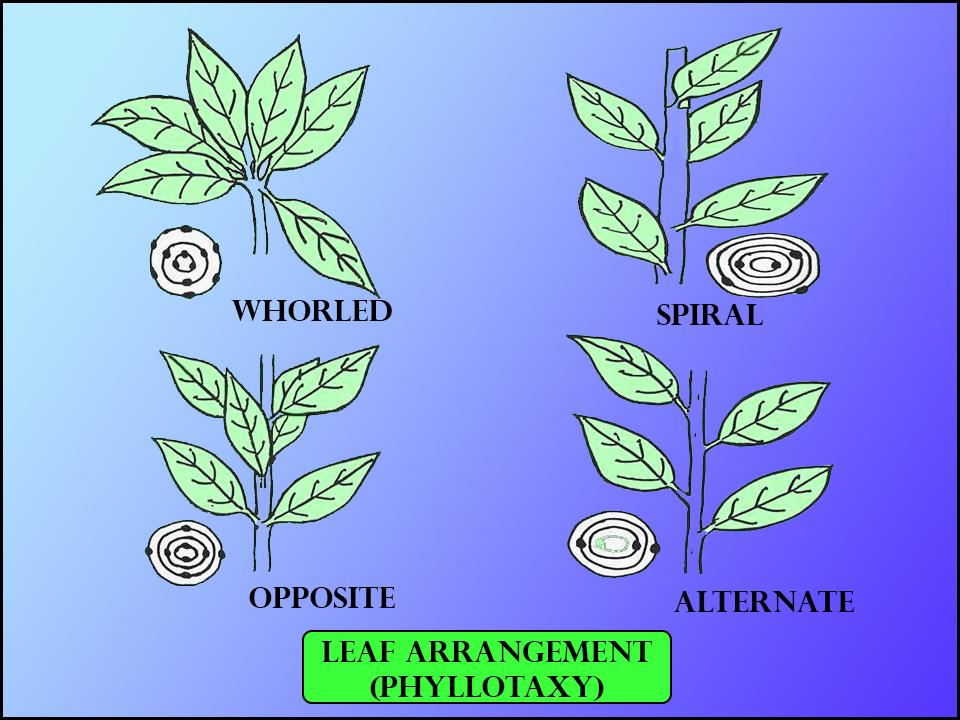
In Spiral Phyllotaxy, the number of leaves at each node is
(a) One
(b) Two
(c) Many
(d) Three
Answer
472.5k+ views
Hint: The arrangement of leaves in a different rotational angle of the stem which is found to be in various patterns naturally and shows the variation in different plants.
Complete step by step answer:
Phyllotaxy or phyllotaxy is the arrangement derived from the Greek word phyllon meaning “leaf” and taxis meaning “arrangement”. The pattern of arrangement of the leaves on the stem of the plants is phyllotaxy. Spiral phyllotaxy has a single leaf on each node.
The term phyllotaxy was coined by Charles Bonnet to describe the arrangement of leaves on a plant.
There are three basic types of phyllotaxy in plants, they are:
Opposite phyllotaxy – it is the basic arrangement of leaves on the stem. From the opposite sides of the stem from its base, two leaves arise.
Spiral phyllotaxy – in this arrangement only a single leaf arises at each node and borne along the stem alternately in an ascending spiral.
Whorled phyllotaxy – in this arrangement, several leaves may arise from the same node on a stem.

With an alternate or spiral arrangement, each leaf arises at a different node on the stem.
The rotational angle from the leaf in a repeating spiral can be represented by a fraction of a full rotation around the stem.
So, the correct answer is ‘(a) One'.
Note: Leonardo da Vinci made observations of the spiral arrangements of plants first. In 1754, Charles Bonnet observed that the spiral phyllotaxy of plants was frequently expressed in both clockwise and anticlockwise golden ratio series. The mathematical observations of phyllotaxy were done by Karl Friedrich Schimper and his friend Alexander Braun in 1830.
Complete step by step answer:
Phyllotaxy or phyllotaxy is the arrangement derived from the Greek word phyllon meaning “leaf” and taxis meaning “arrangement”. The pattern of arrangement of the leaves on the stem of the plants is phyllotaxy. Spiral phyllotaxy has a single leaf on each node.
The term phyllotaxy was coined by Charles Bonnet to describe the arrangement of leaves on a plant.
There are three basic types of phyllotaxy in plants, they are:
Opposite phyllotaxy – it is the basic arrangement of leaves on the stem. From the opposite sides of the stem from its base, two leaves arise.
Spiral phyllotaxy – in this arrangement only a single leaf arises at each node and borne along the stem alternately in an ascending spiral.
Whorled phyllotaxy – in this arrangement, several leaves may arise from the same node on a stem.

With an alternate or spiral arrangement, each leaf arises at a different node on the stem.
The rotational angle from the leaf in a repeating spiral can be represented by a fraction of a full rotation around the stem.
So, the correct answer is ‘(a) One'.
Note: Leonardo da Vinci made observations of the spiral arrangements of plants first. In 1754, Charles Bonnet observed that the spiral phyllotaxy of plants was frequently expressed in both clockwise and anticlockwise golden ratio series. The mathematical observations of phyllotaxy were done by Karl Friedrich Schimper and his friend Alexander Braun in 1830.
Recently Updated Pages
One difference between a Formal Letter and an informal class null english null

Can anyone list 10 advantages and disadvantages of friction

What are the Components of Financial System?

How do you arrange NH4 + BF3 H2O C2H2 in increasing class 11 chemistry CBSE

Is H mCT and q mCT the same thing If so which is more class 11 chemistry CBSE

What are the possible quantum number for the last outermost class 11 chemistry CBSE

Trending doubts
10 examples of friction in our daily life

Difference Between Prokaryotic Cells and Eukaryotic Cells

What is the specific heat capacity of ice water and class 11 physics CBSE

One Metric ton is equal to kg A 10000 B 1000 C 100 class 11 physics CBSE

State and prove Bernoullis theorem class 11 physics CBSE

State the laws of reflection of light




